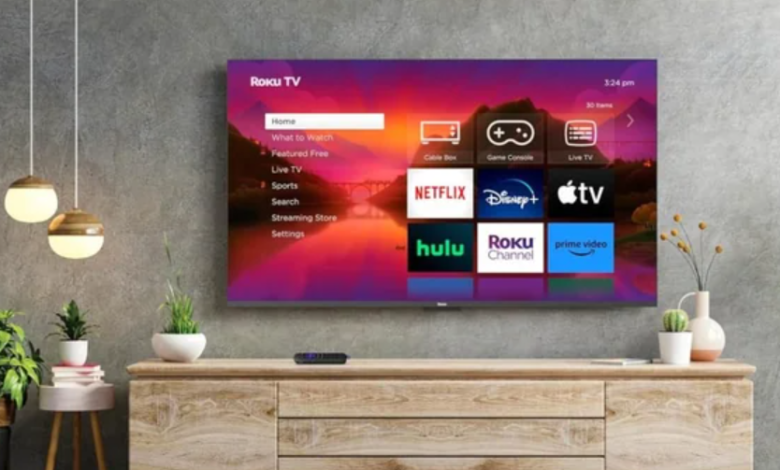Addressable TV Advertising: Targeting Viewers at Scale

The television advertising landscape has undergone a profound transformation in recent years, driven by technological advancements and shifting viewer behaviors. Addressable TV advertising has emerged as a pivotal strategy, enabling brands to deliver highly targeted, personalized messages to specific households or individuals while maintaining the broad reach traditionally associated with television. By leveraging data-driven insights and sophisticated delivery systems, addressable TV advertising combines the precision of digital marketing with the emotional impact of the TV screen. This article explores the mechanics, benefits, and strategic implications of addressable TV advertising, highlighting its role in redefining how brands connect with audiences at scale.
The Evolution of TV Advertising
Television advertising has long been a cornerstone of brand marketing, valued for its ability to reach millions of viewers through compelling storytelling on a large screen. However, traditional linear TV advertising, which delivers the same ad to all viewers of a program, often lacks precision. Advertisers historically relied on broad demographic data, such as age and gender, to estimate audience fit, resulting in inefficiencies and wasted impressions. The rise of internet-connected devices, streaming platforms, and advanced data analytics has paved the way for a more targeted approach.
Addressable TV advertising represents a significant leap forward. Unlike traditional TV, which casts a wide net, addressable TV allows advertisers to customize ads for specific households or individuals based on detailed data points like demographics, interests, purchase history, and viewing habits. This shift mirrors the precision of online advertising but retains the scale and emotional resonance of television, making it a powerful tool for modern marketers.
How Addressable TV Advertising Works
At its core, addressable TV advertising uses advanced technology to deliver tailored ads to specific viewers during linear TV broadcasts, streaming services, or on-demand content. The process involves several key components:
- Data Collection and Integration: Advertisers gather first-party data (from customer databases or CRM systems) and third-party data (from providers like Experian or Acxiom) to build detailed audience profiles. This data includes information on consumer behavior, preferences, location, and even psychographic traits, such as lifestyle or values.
- Audience Segmentation: Using sophisticated algorithms, advertisers segment audiences into granular groups based on their data profiles. For example, a car manufacturer might target households with recent vehicle searches, families with young children for minivan ads, or high-income households for luxury models.
- Ad Delivery Technology: Addressable ads are dynamically inserted into commercial breaks using set-top boxes, smart TVs, or connected TV (CTV) devices. Technologies like automatic content recognition (ACR) and dynamic ad insertion ensure the right ad reaches the right viewer at the right time, even during live programming.
- Measurement and Optimization: Post-campaign analytics provide detailed insights into ad performance, including reach, frequency, engagement, and conversions. Advertisers can track key performance indicators (KPIs) like completion rates and return on investment (ROI), enabling real-time optimization.
This infrastructure allows brands to move beyond the one-size-fits-all model of linear TV, delivering ads that resonate with specific viewers while maintaining the scale of traditional television.
See also: How Technology is Changing the World of Custom Keychains
The Strategic Value of Precision Targeting
The ability to target specific households or individuals offers several strategic advantages for advertisers. By focusing on relevance and personalization, addressable TV advertising enhances campaign effectiveness and efficiency.
One key benefit is improved ROI. By delivering ads only to audiences most likely to be interested, brands reduce wasted impressions and maximize the impact of their ad spend. For instance, a study found that addressable TV campaigns can deliver a higher ROI compared to traditional linear TV or digital media due to their targeted nature. This precision is particularly valuable for niche brands or campaigns with specific audience goals, such as political campaigns targeting swing voters or small businesses focusing on local customers.
Another advantage is enhanced viewer experience. Consumers are more likely to engage with ads that align with their interests or needs. For example, a pet food brand can target households with pet owners, ensuring the ad feels relevant rather than intrusive. This relevance drives higher engagement rates, improved brand recall, and stronger emotional connections, as viewers are 86% more likely to remember ads tailored to their preferences.
Additionally, addressable TV enables flexible campaign strategies. Advertisers can test multiple creative variations, tailoring messages to different audience segments within a single campaign. For instance, an auto brand might deliver a minivan ad to families, a sports car ad to young professionals, and a general brand ad to broader audiences, all within the same program. This agility allows brands to experiment and optimize in real time.
Scaling Reach with Addressable TV
While precision is a hallmark of addressable TV, its ability to deliver at scale is equally critical. Unlike digital platforms, which often target individual users, addressable TV leverages the household as a primary unit, enabling advertisers to reach multiple viewers within a home. This is particularly effective given that TV remains a shared viewing experience in many households, with 85% of the U.S. population still engaging with linear TV weekly.
The growth of connected TV (CTV) and over-the-top (OTT) platforms has further amplified the scale of addressable advertising. By 2025, streaming viewership has surpassed linear TV, accounting for nearly 46% of total TV usage, while CTV accounts for 60% of U.S. TV and video ad investment. Platforms like Hulu, Netflix, and Pluto TV, along with devices like smart TVs and streaming media players, provide a robust ecosystem for addressable ads. These platforms offer non-skippable ad formats and cross-device targeting, ensuring ads reach viewers on TVs, mobile devices, or tablets.
Consortiums like Project OAR (Open, Addressable, Ready), initiated by Vizio, have also expanded the addressable TV universe. By partnering with major content providers like Disney, NBCUniversal, and WarnerMedia, Project OAR has enabled addressable ads on millions of smart TVs, covering 80% of linear TV viewership. Similarly, Nielsen’s Advanced Video Advertising (AVA) initiative integrates addressable capabilities into 15 million LG smart TVs, further broadening the reach.
Overcoming Challenges in Addressable TV
Despite its promise, addressable TV advertising faces several challenges that must be addressed to fully realize its potential. One significant hurdle is standardization. The industry lacks unified measurement standards and data protocols, leading to inconsistencies across platforms. For example, while digital advertising relies on impression-based metrics, traditional TV has historically used ratings-based metrics like Gross Rating Points (GRP). Transitioning to an audience-based currency, as advocated by industry experts, is critical for aligning addressable TV with modern advertising practices.
Another challenge is scale limitations in linear TV. While CTV offers vast scalability, addressable linear TV is constrained by the capabilities of set-top boxes and the willingness of cable and satellite providers to share data. Only a small percentage of linear TV is currently addressable, requiring advertisers to complement linear campaigns with CTV strategies to maximize reach.
Data privacy is also a growing concern. Addressable TV relies heavily on first- and third-party data, raising questions about consumer consent and transparency. Providers like Comcast emphasize deterministic data, which yields a 95% match rate and maintains accuracy over time, but advertisers must balance personalization with privacy compliance. Offering opt-out options and clear communication about data usage is essential to maintaining consumer trust.
Finally, cost remains a consideration. Addressable TV campaigns often have a higher cost-per-thousand impressions (CPM) than linear TV due to their targeted nature. However, the increased value from precise targeting and measurable outcomes often justifies the investment, particularly for campaigns focused on conversions rather than broad awareness.
The Future of Addressable TV Advertising
As the media landscape continues to evolve, addressable TV advertising is poised to become a cornerstone of targeted marketing. Several trends are shaping its future:
- AI and Machine Learning Integration: Artificial intelligence is enhancing targeting capabilities by predicting viewer behavior and optimizing ad delivery in real time. These technologies enable advertisers to refine audience segments and personalize creative content dynamically.
- Cross-Platform Synergy: As viewers consume content across multiple devices, addressable TV is expanding to include mobile, desktop, and gaming consoles. This omnichannel approach ensures brands reach audiences wherever they are, creating a seamless advertising experience.
- Advanced Measurement Tools: The industry is moving toward standardized metrics and improved attribution models, providing advertisers with clearer insights into campaign performance. Tools like CRM match-backs and brand lift surveys are becoming integral to post-campaign analysis.
- Programmatic Advertising Growth: The automation of ad buying through programmatic platforms is streamlining addressable TV campaigns, reducing friction and enabling real-time bidding for inventory. This efficiency is democratizing access to addressable TV, making it viable for mid-market companies and smaller advertisers.
Strategic Implications for Marketers
Addressable TV advertising offers marketers a unique opportunity to combine the emotional power of television with the precision of digital marketing. To maximize its impact, brands should adopt a strategic approach:
First, prioritize data quality. High-quality, deterministic data ensures accurate targeting and minimizes waste. Partnering with providers offering robust first-party data, like Comcast or DISH, can enhance campaign effectiveness.
Second, focus on creative relevance. Tailoring ad content to specific audience segments is critical for engagement. Strong visuals, clear messaging, and calls-to-action (CTAs) aligned with viewer interests can drive conversions.
Third, integrate addressable TV into a broader omnichannel strategy. Combining addressable TV with CTV, OTT, and digital campaigns creates a cohesive brand experience, reinforcing messages across touchpoints.
Finally, invest in measurement and optimization. Leverage real-time analytics to track KPIs like reach, frequency, and conversion rates, and use these insights to refine future campaigns.
Redefining Brand Engagement
Addressable TV advertising is reshaping how brands connect with audiences, offering a balance of scale, precision, and measurability. By delivering personalized ads to specific households, it enhances viewer engagement, improves ROI, and provides actionable insights for optimization. As streaming platforms dominate viewership and technology continues to evolve, addressable TV is becoming an essential tool for marketers seeking to stand out in a fragmented media landscape. For brands aiming to build meaningful connections with consumers, addressable TV advertising represents not just a tactic, but a transformative approach to storytelling at scale.





